I was skeptical of brand licensing at first. I assumed it was simply another jargon tossed about in marketing meetings. However, as I dug deeper, I discovered that license licensing is a strong instrument that can catapult enterprises to new heights. Hence, understanding the potential of brand licensing can genuinely make a difference in a world of tough rivalry and innovation.
Brand licensing establishes a mutually advantageous partnership between two or more businesses. In this post, I will answer the question, “What is brand licensing?”, describe its benefits, analyze how to establish a brand licensing strategy, and highlight factors to consider when creating a brand licensing agreement.
Key Takeaways
- Licensing agreements provide a steady stream of royalty income, enabling brands to diversify their revenue sources. This incremental revenue can help stabilize cash flow, particularly during seasonal fluctuations, and mitigate financial risks associated with new product launches.
- Engaging in brand licensing allows companies to safeguard their intellectual property (IP). By creating licensing agreements that outline the use of trademarks and other IP rights, businesses can combat counterfeit products and maintain their brand’s prestige in the market.
- Selecting the right licensees is crucial to maintaining brand integrity. Brands must implement rigorous quality control measures and monitor the performance of licensees to ensure that product quality meets their standards, thereby protecting their reputation in the market.
- Successful brand licensing requires a willingness to adapt strategies in response to market trends and performance metrics. Regularly reviewing and evolving licensing agreements ensures that they remain beneficial and aligned with the brand’s goals, allowing companies to seize new opportunities as they arise.
What is Brand Licensing?
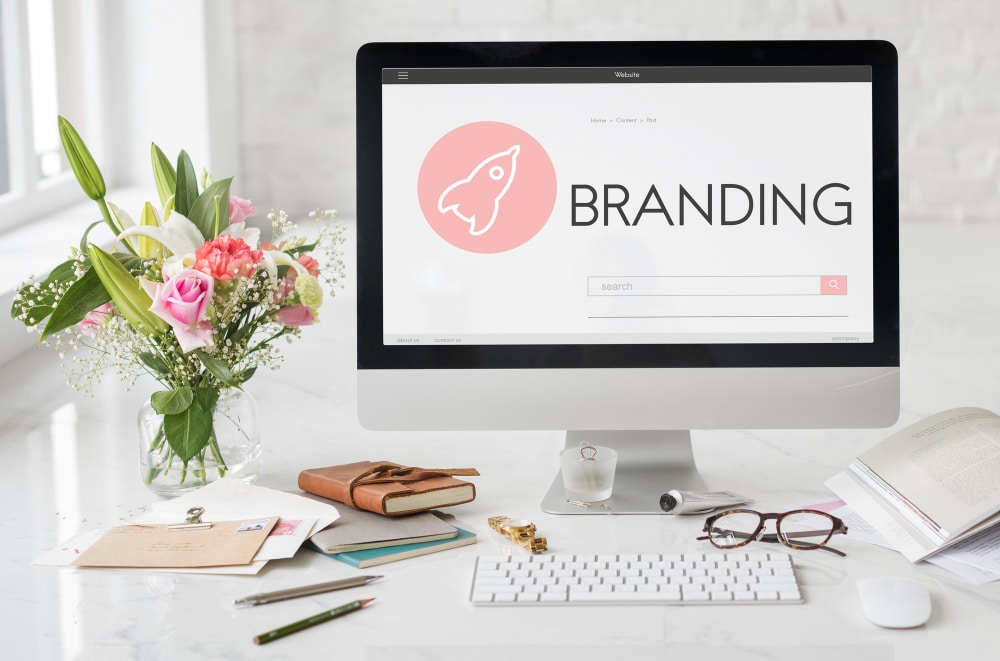
If you are wondering, “What is brand licensing?” It refers to a legal agreement made between two or more organizations. The licensor grants the licensee the right and authorization to utilize its intellectual property (IP) in exchange for an agreed-upon price. This connection may be exclusive, which means that the licensee has exclusive use of the intellectual property. A non-exclusive license, on the other hand, allows the licensor to award IP rights to other organizations at the same time. Brand owners frequently rent out their trademarks, copyrights, patents, characters, and software.
Put simply. Brand licensing is the process through which one firm (the licensor) allows another company (the licensee) to use their brand, trademarks, or products for a price or royalty. It’s a strategic partnership that allows brands to expand their reach without the heavy lifting of product development and manufacturing. Imagine this: You have a fantastic brand that resonates with consumers, but you lack the resources to launch new products. Licensing provides a pathway to revenue generation and market expansion without requiring significant investment.
Examples of licensing agreements
Here are a few examples of brands with a successful licensing agreement,
#1. The Walt Disney Company
Disney does not produce every t-shirt or coffee mug featuring its characters. Since the empire’s initial licensing agreement in 1933, thousands of other firms have inked deals with Disney to use its characters, series names, music, and other trademarks. Those businesses handle specifics such as product development and manufacturing.
These license deals explain why Disney appears to be everywhere. It is the world’s leading licensor, with licensees and direct-to-consumer sales worth $61.7 billion by 2022.
A Birthday Place, a Shopify merchant, took advantage of this brand licensing opportunity by selling a range of frozen-themed party items on its website. Sun-Staches, which also sells wholesale to retail retailers, has a frozen-licensed item.
#2: Netflix
Netflix is the world’s biggest streaming service. Over 77 million people pay to access its on-demand entertainment library. Netflix has built dedicated fan bases around some of its “sub-brands” or programming through its series and films.
Fugitive Toys, a Shopify merchant, sells a variety of licensed products online and in its California locations. There are Stranger Things miniatures among them. But Fugitive Toys doesn’t just do brand licensing with Netflix—it also, like A Birthday Place and SunStaches, licenses from Disney, Pokémon, and others.
#3. Ford Motor Company
The licensed product categories for auto brands are diverse, ranging from apparel to toys, novelties, and collectibles. Ford, an iconic, traditional American brand, and its top-rated licensing program are successfully leveraging all categories.
Casie Ocaña, worldwide brand licensing manager at Ford Motor Company, explains that the company has a procedure in place to analyze license applications and collaborate with internal teams to identify key categories and growth potential for new partners. “When it comes to picking those partners, Ford looks to ensure the company shares the same values as well as passion for our products and consumers.”
These instances demonstrate the significance of picking the proper partners, keeping quality control, and adapting to market trends. Successful brand licensing is about creating mutually beneficial relationships that foster growth.
Types of Brand Licensing
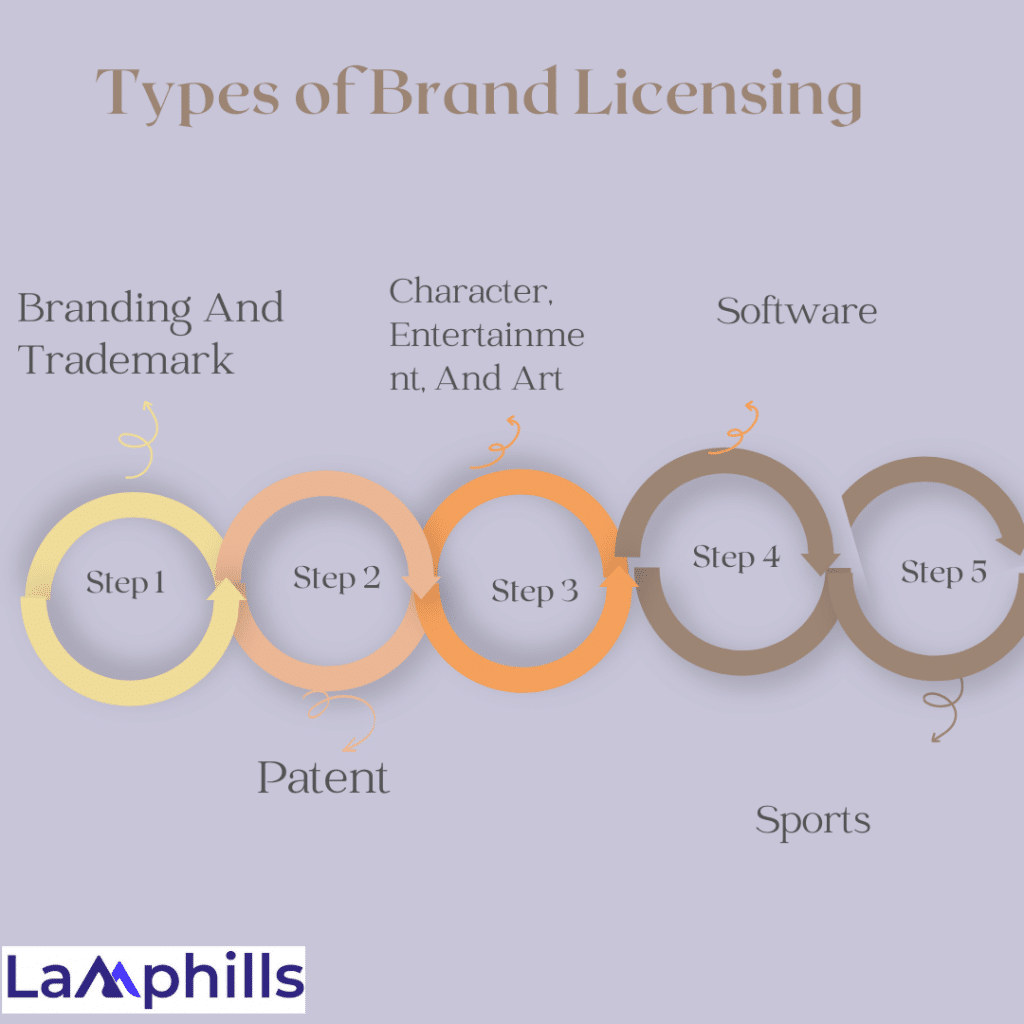
Brand licensing comes in various forms, including:
#1. Branding And Trademark
Businesses can obtain the right to use a brand name or emblem. These are known as trademarks, and they exist to prohibit other companies from utilizing a company’s assets. Companies can provide other brands with the right to use their trademarks. Take Coca-Cola, for instance. Independent brands can make fizzy drinks on behalf of Coca-Cola since they hold a trademark license. These alliances generate upwards of $1 billion in retail sales for the mega-brand.
#2. Patent
A patent is comparable to a trademark in that its intellectual property is legally protected against illegal commercial usage. The main distinction is that patents are only granted to innovations, not brand names or logos.
Patents can be awarded for new machinery, design (consumer product), or plant inventions. One example is Lollacup. Anyone who wants to use its weighted children’s sippy cup needs a patent license from the brand.
#3. Character, Entertainment, And Art
Characters are an additional sort of trademark that brands can license. The most apparent example is Disneyland. Mickey Mouse, Marvel, and Star Wars characters can be seen on items throughout the world, including official Disney merchandise. Third-party firms are granted a license to utilize Disney characters on their clothing, home décor, and cups.
These trademarks have crossed over into entertainment. Disney also licenses its films, television shows, and music. Even footage from its theme parks is only available to those with a brand license.
#4. Software
If you pay to use software, you get a single-user or team license. You cannot sell access to the product to anybody else unless you obtain a multi-user license. This enables third-party companies to resell a software company’s code to other others.
#5. Sports
The licensed sports products market is a huge business. According to the Global Licensing Group, it will be worth $31.3 billion in 2022, with a compound annual growth rate of 3.5% expected through 2028.
Sports teams like the NBA, NFL, and European soccer leagues all negotiate brand licensing agreements. Each arrangement permits third-party companies to create products with the team’s logo or player name.
Factors To Consider When Creating A Brand Licensing Agreement
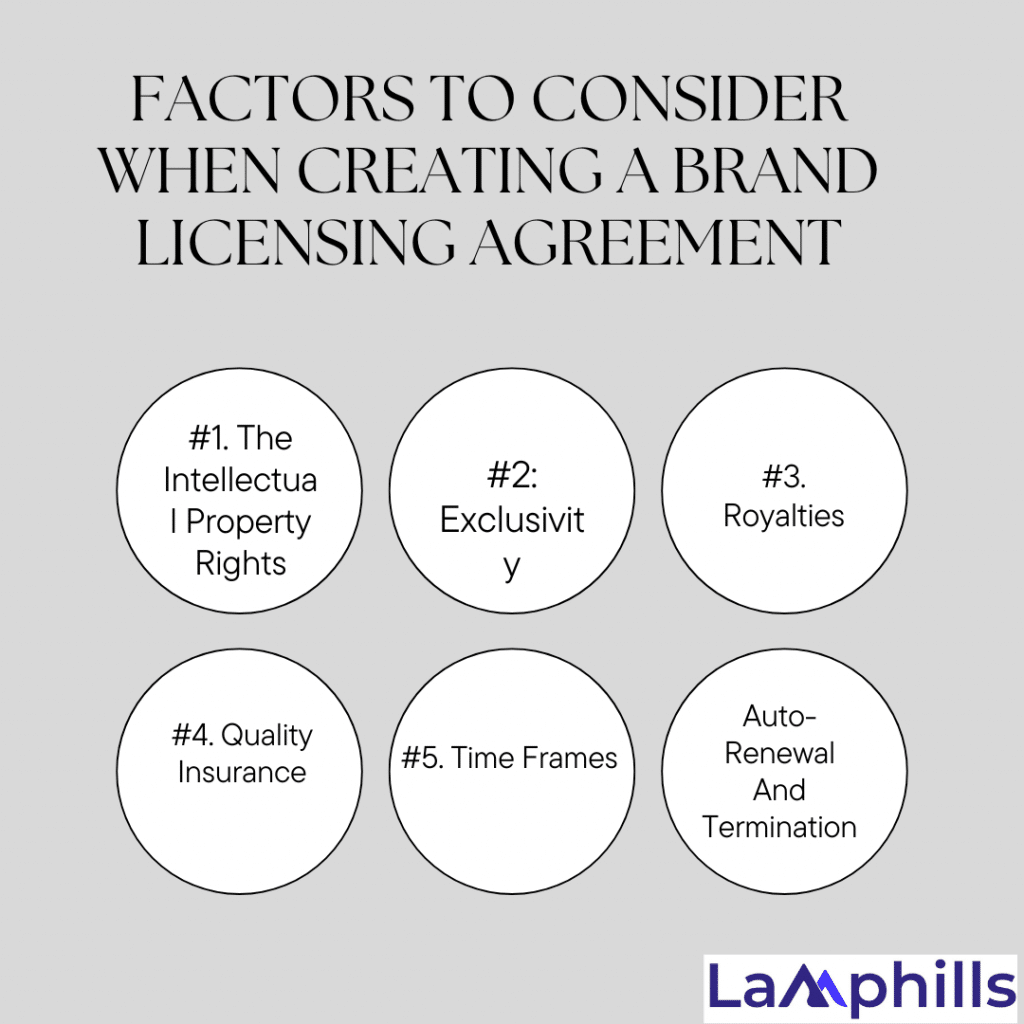
Here are some factors to consider when creating a licensing agreement:
#1. The Intellectual Property Rights
The company may have one or more intellectual property rights or personalities available for licensing. It is critical to explicitly describe the intellectual property rights you wish to license, as well as the roles of the parties in the agreement. You can also include various terms for each license to define unique restrictions and uses.
#2: Exclusivity
It is critical to determine whether you want to sign an exclusive deal with the licensee. Most licensing agreements are non-exclusive, meaning you can license the brand to as many organizations as you like. Although non-exclusivity is common in most contracts, it is nevertheless important to specify it in the agreement. You may also choose to offer a select exclusive license and charge greater royalties for these agreements.
#3. Royalties
Royalties are an essential component of the licensing agreement, so it is critical to describe the form of financial remuneration. You can also incorporate sales tracking in the contract. In these cases, you might seek sales statistics from your partners to assess the value of the connection and decide whether to renew the deal. You may also include a condition that governs the discounting of licensed products. This provision specifies the maximum discount that licensees may provide to clients. Common payment structures to consider for your brand licensing agreements include:
- Initial flat fee: In this payment structure, licensees pay a flat fee to use the company’s brand. You can use this structure for yearly agreements.
- Ongoing royalties: In this payment structure, the licensees pay a fixed percentage of the unit price or a specific amount for each product. For instance, if the licensee sells $40,000 worth of goods in a 10% payment structure, the company’s share is $4,000.
#4. Quality Insurance
Licensing a company’s brand entails taking calculated risks because people may associate with the brand and hold it accountable for the content and quality of the items. It is critical to include quality assurance clauses in the licensing agreement. For example, you can limit how your partners can use the licensed rights. For example, you could prohibit them from distorting the company logo, changing the brand colors or typefaces, or adding new codes to licensed software.
#5. Time Frames
Consider specifying the duration of the license agreement. Although there is no perfect duration for licensing contracts, you may start with a short-term agreement. This deal allows you to evaluate the success of the new product before committing to a long-term agreement. In contrast, longer agreements may benefit larger arrangements because they give your partners more time to market the products.
#6. Auto-Renewal And Termination
It’s essential to consider if the agreement auto-renews after its expiration and the financial implications of a new deal. For example, if you entered a two-year contract, you may include a clause that states that the royalty fee increases from 12% to 15% in all product sales in the event of automatic renewal. In addition, it’s essential for the licensing agreement to contain a termination clause that includes:
- When the agreement ends
- How each party can unilaterally end the agreement
- The required termination notice
How to License Your Brand
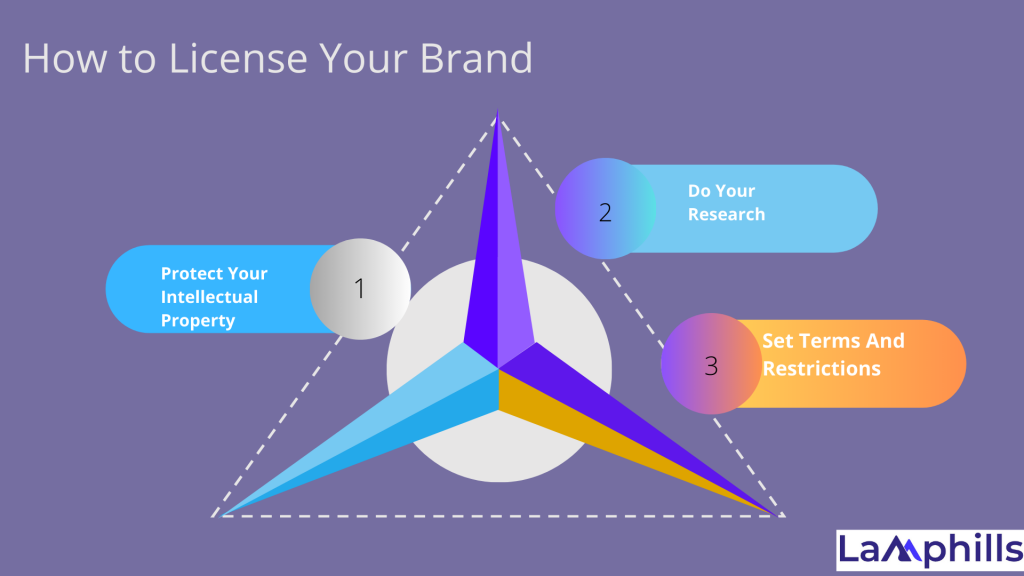
An efficient brand licensing plan guarantees that your brand’s assets are safe and secure and that any licenses you grant will eventually benefit your brand. Here’s how you get started.
#1: Protect Your Intellectual Property
Protecting your intellectual property (IP) is one of the most crucial aspects of licensing your business. The last thing you want is to mistakenly grant someone complete, unrestricted access to your brand assets without receiving anything in return.
Hence, working directly with a lawyer who specializes in intellectual property is the best approach to defending your business, and you should start early. Also ensure your brand’s assets are trademarked and protected from the start. Then you can consider licensing them in the future.
#2. Do Your Research
Licensing your brand isn’t a one-and-done process. If you’re looking to aggressively pursue brand licensing as a growth engine for your retail business, it’s best to create an overarching strategy that outlines what you’re looking for in a potential licensee. That way, you can make a quick decision about which companies to approach and approve.
It all starts with extensive research. Like any partnership, you’ll evaluate potential licensees to ensure they’re a good fit for licensing your brand. There are a ton of factors that go into brand fit, but let’s boil it down to a few questions you should consider:
- Are your customers interested in this product? If customers frequently ask if you offer a product (and you don’t), that’s a good opportunity to offer someone else a license to produce that product under your brand name.
- Does your brand’s equity translate to this product? Sports teams license their logos and names to apparel companies because fans snap up Red Sox hats like there’s no tomorrow. That fits. It wouldn’t make quite as much sense for Tampax to license their brand to a company that makes breakfast cereal.
- Does the licensee have the operational capacity to add value? You gain the most from brand licensing agreements when the licensed products sell (a lot.) For any potential licensee, ask yourself: Can they produce enough of the licensed product to make the agreement lucrative?
#3. Set Terms And Restrictions
After you’ve identified a possible licensee who is a good fit for your brand and customers, it’s time to prepare the licensing agreement. As previously stated, you should consult with a licensing agency or attorney to confirm that your contract includes all required conditions and that the agreement is legally binding.
You will choose numerous conditions and limits as your representative creates the license. These outline the specifics of the collaboration and establish expectations for both you and the licensee.
The Benefits Of Licensing Your Brand For Business Growth
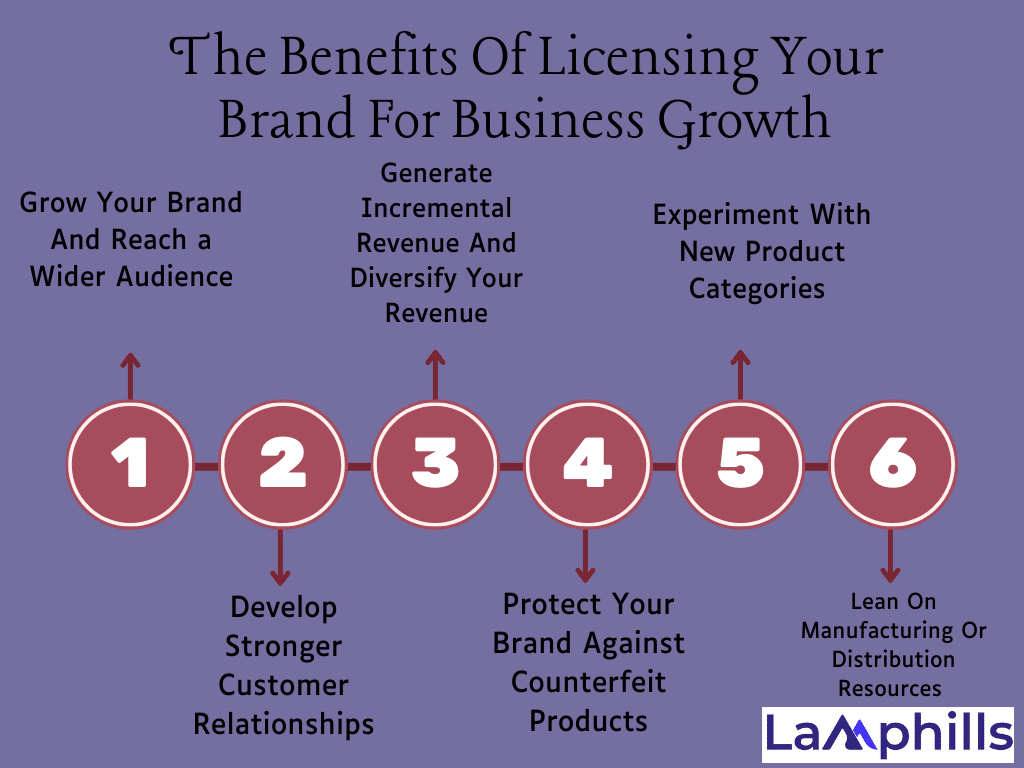
Here are some benefits of brand licensing:
#1. Grow Your Brand And Reach a Wider Audience
Licensing your brand requires establishing a collaboration with another business. One of the primary advantages of these agreements is the ability to reach a larger audience. Working with another brand grants you immediate access to its customers and audience, and vice versa. Whether you’re the licensor or the licensee, both companies share their consumers, allowing them to grow and expand into a new age group, geographic area, and so on. Working with existing licensees makes market entry easier.
#2. Develop Stronger Customer Relationships
As your brand expands, so do your clients’ desires and expectations. No matter the size of your company, it can be difficult to build a product selection in a significant way keep pace with customer expectations. Licensing your brand is one approach to connecting your production and product design skills. What was the result? Driving repeat sales and delivering the products your customers want.
“The licensed product spreads faster on social media,” says Brian Garofalow, Igloo’s Chief Marketing Officer. “When people buy something, they enjoy sharing it. That is a big aspect of our company and our positioning: we are enjoyable. It makes a lot of sense for us to do entertaining licenses because they make people happy and they enjoy showing off their coolers.”
#3. Generate Incremental Revenue And Diversify Your Revenue
With a brand licensing agreement, and as the licensor, you’ll typically receive royalties for every licensed product sold. Royalties aren’t typically going to take your business from $1,000 in revenue to $1 million, but they can be a good way to add incremental value and diversify the ways your brand can make money. Depending on the licensed merchandise, that incremental revenue can even help to smooth out seasonal swings in your retail store.
#4. Protect Your Brand Against Counterfeit Products
If you’ve ever been to a public market, you’ve probably seen unlicensed and counterfeit products being sold illegally. Think of those $20 “Coach” handbags or $10 “Ray-Ban” sunglasses.
When a brand gets big enough, counterfeiters are never far behind. Licensing your brand can help you stay ahead of this curve. One of the first stages of the brand licensing process is to protect your intellectual property. It also protects your brand’s prestige with explicit terms around discounting and similar issues. This proactiveness means your brand has a leg to stand on when battling counterfeit products.
#5. Experiment With New Product Categories
Getting into a new market is risky. Sure, you can conduct product research, listen to customers, and monitor rival activity. However, you never know whether investing in a new product will pay off unless you try it.
Brand licensing agreements can help to mitigate this danger. On the one hand, well-established enterprises have access to financing, knowledge, and experience in a pre-existing market. As a startup company, however, you must either seek outside capital or invest your own money in product development. This can be time-consuming and costly, as well as risky.
An established and profitable firm will be able to manufacture in greater quantities and advertise your product to a much larger audience—something smaller, independent businesses can’t do so easily.
#6. Lean On Manufacturing Or Distribution Resources
One of the most difficult aspects of expanding a retail business is manufacturing. You can lure visitors to your store or e-commerce website, but once they arrive, you need the production process to go smoothly. Otherwise, those potential buyers walk away empty-handed.
According to Joy Organics’ chief marketing officer, Gerrid Smith, brand licensing makes this easier. “Working with a licensor or licensee who has established manufacturing and/or distribution facilities and experience may allow you to take advantage of these resources,” he shares.
“This could reduce your time to market and save you money and effort by removing the need to establish a production plant, for example. By pooling common costs such as promotions and advertising efforts, both the licensor and the licensee may be able to save money and gain efficiencies.”
Potential Challenges in Brand Licensing
While brand licensing offers numerous benefits, it’s essential to be aware of potential challenges.
#1. Loss of Control Over Brand Image
One of the most significant concerns of licensing is the potential loss of control over your brand’s image. If a licensee fails to maintain quality or misrepresent the brand, it might have long-term ramifications.
#2. Complicated Legalities
Navigating the legal complexity of licensing agreements can be challenging. It is critical to ensure that contracts cover all bases and safeguard your interests.
#3: Financial Risks
Finally, there are financial implications to consider. If a license deal does not meet expectations, it may result in lost money and broken relationships.
Best Practices for Successful Brand Licensing
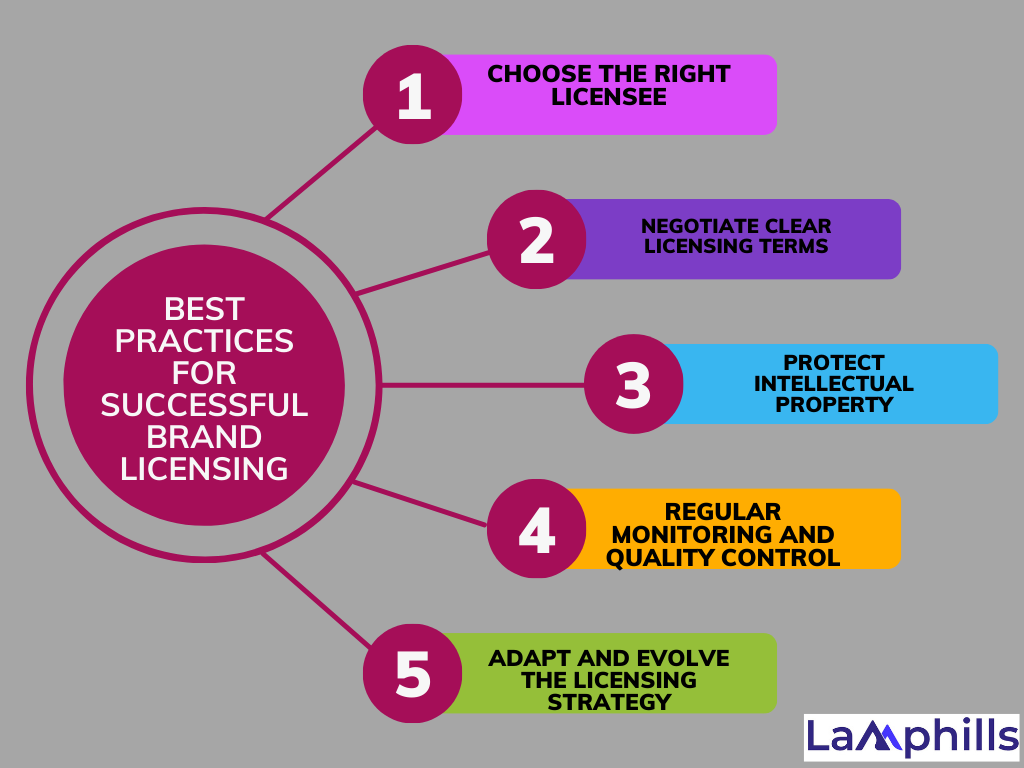
#1. Choose The Right Licensee
Selecting the correct partner is critical to effective brand licensing. It’s critical to select licensees who share your brand values and have an established track record in the business.
I’ve seen firsthand how a poorly picked licensee may harm a brand’s image. One of my clients worked with a licensee who did not adhere to quality requirements, resulting in poor items hitting the market. This experience showed me the value of thorough vetting and alignment in collaborations.
#2. Negotiate Clear Licensing Terms
Negotiating precise conditions is critical to the success of any license transaction. To minimize future misconceptions, be precise about royalty fees, quality requirements, and brand usage.
We spent a lot of time drafting an agreement that clearly outlined each party’s responsibilities. This attention to detail paid off when the licensee upheld their end of the deal, resulting in a successful product launch.
#3. Protect Intellectual Property
Protecting your brand’s intellectual property is critical in licensing agreements. This includes trademarks, logos, and exclusive designs.
I frequently urge customers to speak with legal specialists when creating agreements to ensure that their intellectual property is effectively safeguarded. A robust legal foundation can help you avoid costly lawsuits and protect your brand’s reputation.
#4. Regular Monitoring and Quality Control
Once a licensing agreement is in place, the licensee’s performance must be constantly monitored. Maintaining brand integrity requires ensuring that product quality matches your standards.
In one instance, I cooperated with a lifestyle brand that was experiencing quality concerns with a licensee. By implementing a routine monitoring approach, we were able to identify problems early and correct them before they harmed the brand’s reputation.
#5. Adapt and Evolve the Licensing Strategy
Finally, be prepared to adapt your licensing strategy as the market evolves. Regularly evaluate the performance of your licensing agreements and be open to change.
For example, when a popular trend emerged in the fitness industry, I advised a health food brand to explore licensing their products to fitness influencers. This pivot not only boosted their visibility but also aligned with shifting consumer preferences.
What do you mean by product licensing?
Product licensing is a legal agreement between two organizations in which a product’s copyright holder allows another company to sell the product in a designated region.
What does co-branding mean?
Co-branding is a marketing strategy that utilizes multiple brand names on a good or service as part of a strategic alliance.
What is the difference between brand extension and brand licensing?
Brand extension is when a brand ventures into a new, different category than its original business. Brand licensing is when another company pays your brand to use it in its products.
Conclusion
In a world where brands are constantly competing for consumer attention, brand licensing provides a vital chance for expansion. This is why businesses that will grasp the fundamental benefits and best practices of licensing mentioned in this article can open up new revenue streams, broaden their reach, and form long-term partnerships.
Reflecting on my experiences, I’ve seen how good brand licensing can revolutionize firms and leave a lasting impression. If you haven’t considered brand licensing for your business yet, now is a good time to start. Who knows. Your next big opportunity could be as simple as signing a licensing deal.






